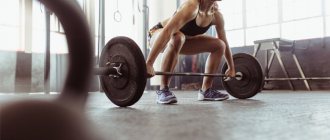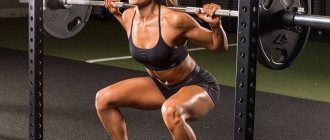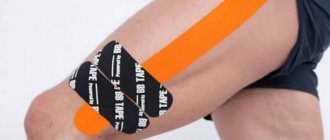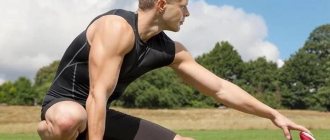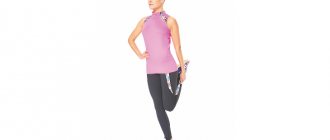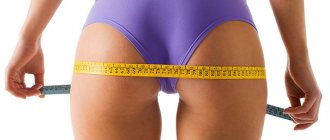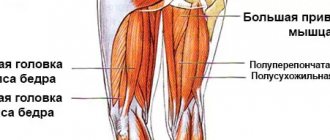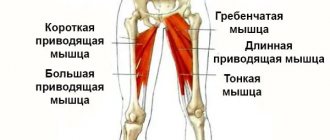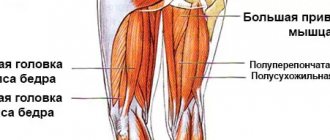The deterioration of the elasticity of joints and muscles is influenced by factors such as a sedentary lifestyle and age-related changes. Regular stretching is the best way to maintain youth, flexibility and mobility for a long time.
Here are 20 great hamstring and hamstring stretches that will protect your body from damage and help you achieve a healthier body. In addition, this set of exercises is recommended for everyone who wants to improve leg stretching and do the splits, as well as master complex gymnastic tricks.
Lesson No. 2: quadratus transversus muscle bends
This stretching exercise is good for you if you want to stretch the quadriceps femoris muscle, which crosses the thigh and knee. However, it is not recommended to perform this exercise if you have had any knee injuries.
- Get on one knee and place your other foot on the floor.
- Grasp the ankle of your back leg.
- Try to move your hips forward a little to increase the stretch.
- As you begin to feel the stretch and pressure on your thigh, hold this position.
- Hold for 20-30 seconds and repeat at least twice.
Muscles involved: Quadriceps femoris. Iliopsoas. Square.
Stretching the back, shoulder joint and hands
Overhead squat
- Take the empty bar with a medium grip and lift it above your head.
- The legs are shoulder-width apart and the toes are slightly turned to the sides.
- Slowly lower your pelvis and bend your knees to the level of a deep squat.
- As your shoulders get used to it, you can bring your arms narrower and narrower.
Front squat using straps
- We fix the empty bar on the hands with straps.
- We throw it over the chest and the front of the shoulders.
- At the same time, the brushes bend outward.
- In this position we squat with the bar.
- You can ask your partner to belay you and support your elbows extended forward.
Lifting the bar behind the head while lying down
- We lie down on the banquette.
- Raise the bar up.
- We fix the elbows in an extended position.
- We begin to lower our hands with the bar behind our heads.
- Slowly move the bar slightly lower than head level.
- Raise your arms back to the starting position.
Important!
When performing the exercise, partner insurance is required.
Photo: istockphoto.com
Hamstring stretching class with video
The hamstrings are one of the most tense tendons a person puts on during the day, which can lead to discomfort and back pain. This stretching lesson for beginners can be watched on video. With regular exercises at home, you can reduce the discomfort in your back.
- Raise one leg in front of you and place it on a high surface.
- Shift your body weight to your extended leg and tilt your hips back slightly.
- Hold for 10-30 seconds.
Muscles involved: Hamstring muscle group.
Watch the video on how to do this exercise correctly:
Stretching the muscles of the back of the thigh: general rules
Physical exercise requires following certain guidelines for its implementation. Stretching the thigh muscles is no exception. This set of exercises is called stretching. This type of aerobics is an effective way to stretch muscles and improve a person’s general physical condition.
To obtain the desired results, training must be carried out systematically. These physical exercises are popular among fitness enthusiasts as they do not require special preparation. Stretching is used to correct body shape, prevent and treat diseases of the legs and back.
Immediately before stretching the muscles, be sure to warm up and warm up. This will prepare the connections for later exercises.
A good way to warm up is to jump in place or run at a normal pace with hopping and swinging movements. You need to remember about breathing: you cannot hold it.
Stretching the leg muscles allows you to qualitatively prepare the body for physical activity and competitions. Regardless of age and training experience, stretching is a necessary part of artistic gymnastics. In order for the exercises to bring the desired results, a training program is drawn up, which provides a calendar of gym visits, stretches of various leg muscle groups and diet are described.
The benefits of training are obvious: the body develops resistance to stress, weight and cardiovascular system are normalized, legs take a beautiful shape and become stronger.
Seated Hamstring Stretching
Another hamstring stretching video for beginners that you can do at home.
- Sit on the floor.
- Bend one leg at the knee and pull it towards you.
- Bend forward, keeping your back straight.
- The time of one tilt is 10-30 seconds.
Muscles involved: hamstrings (semitendinosus, semimembranosus and biceps)
Try to do the stretching exercise as the instructor does in the video:
⇒ See more stretching exercises here | More stretching exercises for stretching the hips
Anatomy of the posterior thigh
The structure of the muscles of the lower extremities includes the following elements:
- buttocks;
- posterior and anterior femoral surfaces;
- calf muscles.
The group in question is the largest and should receive a larger share of the load during training. It is especially recommended to do exercises such as stretching the hamstrings. The muscles of this part of the leg are involved in flexion, extension, internal rotation of the knee, tilting the pelvis forward and abducting the limb backward.
The structure of the posterior part of the thigh includes the biceps, semimembranosus and semitendinosus muscles.
Losing weight and increasing muscle mass is the main goal of an athlete or fitness enthusiast. Regular exercise and a balanced diet will help tighten your legs.
Leg raises while lying on your stomach
An excellent static load for girls and women, acting mainly on the biceps femoris muscle. The difficulty is not high, the main thing is to concentrate on the area being worked and feel the muscle tension in it. This movement is also called “Lying Hyperextension.”
- Starting position - Lay a mat, lie on your stomach, arms and legs straight and extended down;
- As you inhale, we lift 2 straight legs up 15-20 centimeters from the floor level, hold for 2-3 seconds;
- Exhaling, we come to the starting position.
More details in the video:
You can perform actions on both legs at once, or separately on each. To begin with, 15-20 repetitions in 3-4 approaches will be enough.
You can perform the exercise without weights, or use weights on your calves or ankles.
Rules for performing the opening of the joints of the pelvis and hip
The joints are opened with special exercises that can move the pelvic bones apart. This creates an impressive space between them, which allows the active production of synovial fluid. Its importance for a healthy joint is enormous, since it nourishes the cartilage layer and smoothes out friction in the joint capsule.
The process of opening the bone tissue can create injury.
How to open the hip joints so that this does not happen? To do this, it is important to familiarize yourself with the following rules:
- Before you start performing stretching asana on your own, you need to carefully study the methodology for doing it. Pay attention to the nuances of the exercise.
- Do each action gradually, without haste. This method will help you improve little by little without feeling much pain, and if you do the asana quickly, the tissues will not be able to adapt naturally.
- If you feel severe pain, you should stop. This means that blood circulation is impaired.
- The main thing is the systematicity of the exercises. It is necessary to conduct from 2 to 4 workouts per week.
Yogic asanas most productively open the hip joints.
Gluteal muscles[edit | edit code]
What are you stretching:
Rotator lumbar, transverse femoral, piriformis and gluteal (gluteus maximus)
What are you abbreviating:
Abdominal muscles, anterior thigh muscles from top to bottom (hip flexors, including quadriceps)
How many times to repeat:
10 per side
How long to hold:
2 seconds
Lie on your back and stretch your legs. Turn the leg you won't be working on towards the middle of your body, with your toes facing inwards. This stabilizes the hips. Using your abdominal and hip flexor muscles, lift your bent knee toward your opposite shoulder without lifting your pelvis. Once the knee can be easily grasped, place your hand on the outside of the knee and gently pull. If you want to do a deeper stretch of the gluteus medius and piriformis muscles, you can further assist the leg by grasping the outside of the shin with the opposite hand and pressing the heel down as the knee approaches the shoulder. Be careful not to injure your knee.
One head it's good, but two better…
Assistant, let the athlete do everything himself, but at the end gently help him. Place your hand on your upper outer thigh and the other on your ankle. Pull slightly and hold for 2 seconds.
Note
. View from above. The head is at 3 o'clock.
| Range | Position on the dial | Range of motion degree |
| Red range Too tight | 9.00-12.00 | 0-90 |
| Yellow range Normal | 12.00-1.00 | 90-120 |
| Green range Athlete's norm | 1.00-2.00 | 120°-150 |
| Blue range Hypermobility | 2.00-3.00 | 150°-180° |
Single leg squats
Squats themselves are very effective for the lower body. But it is squats on one leg that will really load and contribute to losing weight on the back surface. There are 2 types of this load, they differ in the location of the non-supporting leg. The difficulty of implementation is high, in addition to coordination, such a training of the hamstrings will perfectly work the necessary area and help burn cellulite on the legs.
About 7 types of different squats for the hips and the difference between them, see here .
Option one - standard
Technique:
- Starting position – straight back, supporting leg slightly bent at the knee, the other, bent, pressed against the body;
- While inhaling, we squat as deeply as possible;
- After exhaling, we return to the original position.
Option two - pistol
- Starting position - the body is stretched out like a string, one straight leg is extended forward until it is parallel to the floor;
- Inhaling, a squat is performed;
- As you exhale, return to the upward position.
30 Day Squat Challenge .
Watch the video for more details:
If it is difficult to perform actions on the floor, place your supporting leg on a support - a chair, stool or bench.
The exercise must be performed until the characteristic tension in the muscles occurs.
For starters, 15-20 times in several approaches is enough. The time between sets is 30-45 seconds. If the load is easy, try picking up dumbbells. This is interesting! Such squats help to change the shape of the calf muscles, and therefore effectively combat false curvature of the legs.
Final Thoughts
- According to Lehman, the diagnosis of shortened hip flexors is overused. The Thomas test may give false positive results. Lehman himself often tests patients by simply placing them on a couch and stretching their leg into extension. Loss of movement is extremely rare.
- Lehman doesn't think sitting for eight hours will shorten the hip flexors.
- The feeling of hip flexor tightness can be subjective.
- Stiffness in movement does not necessarily have mechanical causes. We also have a nervous system, and restriction of movement may be associated with a perceived threat or defensive behavior.
- However, all methods used to treat the nonexistent "lower cross syndrome" may be helpful for pain or dysfunction. You shouldn’t throw out the baby with the dirty water of non-existent diagnoses, i.e. useful exercises.
Greg Lehman self-critically notes that he is not the first to write on this topic. There are other posts, shorter ones.
Adductors (closing muscles) of the thigh[edit | edit code]
What are you stretching:
Large muscles of the back of the thigh (hamstrings)
What are you abbreviating:
Anterior thigh muscles from top to bottom (hip flexors, including quadriceps)
How many times to repeat:
10 per side
How long to hold:
2 seconds
Lie on your back and stretch your legs. Grab both ends of the rope to form a loop. Place the foot of the leg you are going to work on in the loop and wrap the rope around the inside of your ankle so that the ends of the rope are on the outside. Secure the knee of this leg. Rotate your free leg slightly inward.
From the hip, using abductors, move the leg you are working away from your body with your heel facing forward. Pull the rope a little. Use the rope for a little help at the end of the stretch. Don't pull your leg into position or your groin will hurt. Perform 10 reps, then repeat, this time with your fingers facing forward.
One head it's good, but two better…
Helper, help your client hold the knee. Let him do all the work and use the rope, but give him a little help at the end. Place one hand on your inner thigh and the other on your heel. Pull slightly and hold for 2 seconds. As the joint opens, each subsequent stretch can be slightly deeper.
Note
. Starting position: Your feet are at the 6 o'clock position.
| Left-hand side | Right side | ||||
| Range | Position on the dial | Range of motion degree | Range | Position on the dial | Range of motion degree |
| Red range Too tight | 6.00-4.30 | 0°-45° | Red range Too tight | 6.00-7.30 | 0-45 |
| Yellow range Fine | 4.30-3.30 | 45-75* | Yellow range Fine | 7.30-8.30 | 45-75 |
| Green range Athlete's norm | 3.30-2.30 | 75-105 | Green range Athlete's norm | 8.30-9.30 | 75-105 |
| Blue range Hypermobility | 2.30-12.00 | 105-180° | Blue range Hypermobility | 9.30-12.00 | 105-180 |
Content
- 1 Pelvic shift with one leg
- 2 Pelvic shift with two legs
- 3 Hamstrings on bent leg
- 4 Hamstrings on straight leg
- 5 Adductors (closing muscles) of the thigh
- 6 Hip abductors
- 7 Psoas muscle
- 8 Quadriceps muscle
- 9 Gluteal muscles
- 10 Piriformis muscles
- 11 External rotators of the thigh
- 12 Internal rotator muscles of the thigh
- 13 Medium rotator muscles of the thigh
- 14
Piriformis muscles[edit | edit code]
Piriformis stretch
What are you stretching:
Muscles (piriformis) underlying the large muscles (gluteus maximus) in the buttocks, lumbar rotators and external hip rotators
What are you abbreviating:
Lower abdominal muscles, hip rotators and adductors, and the front of the thighs from top to bottom (hip flexors, including quadriceps)
How many times to repeat:
10 per side
How long to hold:
2 seconds
Lie on your back and stretch your legs. Take the rope by the ends so that you form a loop. Place the foot of the leg you will be working with in the loop. Straighten your knee. From the hip, using your quadriceps and hip flexors, lift your straight leg up until it is perpendicular to the ground (ideal 90° angle), “climbing” the rope with both hands. The foot points to the ceiling. When the leg has taken the desired position, grab the ends of the rope (so that the loop does not slip) with the opposite hand (if the leg is right, then with the left, and vice versa). Extend your other arm on the surface to stabilize your body position and prevent you from tipping over. Pull the rope a little. Tighten your adductors, hip internal rotators, and lower abdominal muscles to bring your leg across your body until your hip begins to rise. Help yourself a little with the rope at the end of the stretch. Don't pull your leg into the desired position, as you may injure your hip.
One head it's good, but two better…
Assistant, help the athlete not bend the knee. Let him do all the work and use the rope, but give him a little help at the end. Place one hand on the heel of the working leg and the other on the thigh of the other leg. Pull slightly and hold for 2 seconds. When the joint opens, each subsequent stretch can be a little deeper, the foot of the working leg will fall lower. It is important that the athlete does not roll over, so firmly hold the hip of the non-working leg.
| Range | Position on the dial | Range of motion degree |
| Red range Too tight | 9.00-10.00 | 0-З0 |
| Yellow range Normal | 10.00-10.30 | 30-45 |
| Green range Athlete's norm | 10.30-12.00 | 45-90 |
| Blue range Hypermobility | 12.00-2.00 | 90-120 |
Urgent Care
This type of assistance is appropriate when a person’s life is in danger as a result of a hip injury. In the presence of painful shock, it is important to direct all efforts to maintaining the basic processes of life: breathing and heartbeat. To do this, the victim is placed on his side, placing a cushion under his head and legs. Inhaling vapors of ammonia and active massage of the ears will help bring a person to his senses.
If you are vomiting, you should hold your head, as vomit may block the airways. A weak thread-like pulse requires chest compressions and artificial respiration.
Before diagnosis, it is recommended to apply cold to the source of pain. Heat and warming bandages should be avoided, as this will provoke additional blood flow to the sore spot, increasing swelling and bleeding.
The person should be calmed as much as possible by limiting his physical activity. During transportation, a fixing splint can be applied to ensure immobility of the hip. This will reduce the intensity of pain and help avoid the development of additional injuries.
Pelvic displacement with two legs[edit | edit code]
What are you stretching:
Lower back (sacrospinalis) and buttocks (gluteus maximus)
What are you abbreviating:
Abdominal muscles and anterior muscles of the upper and lower thighs (hip flexors, including quadriceps)
How many times to repeat:
10
How long to hold:
2 seconds
Lie on your back. Bend both knees, feet flat on the surface you are lying on. Wrap your hands under your knees to prevent pressure on your knees and help you at the very end of the free movement. Using your abdominal muscles and quadriceps, lift your legs toward your chest as far as you can. Then gently help with your hands, but do not pull.
One head it's good, but two better…
Assistant, sit at the client's feet. Let the athlete do everything himself, but at the end, gently help him. Push a little and hold for 2 seconds.
| Range | Position on the dial | Range of motion degree |
| Red range Too tight | 9.00-12.00 | 0-90 |
| Yellow range Normal | 12.00-1.00 | 90-120 |
| Green range Athlete's norm | 1.00-2.00 | 120-150 |
| Blue range Hypermobility | 2.00-3.00 | 150-180° |
